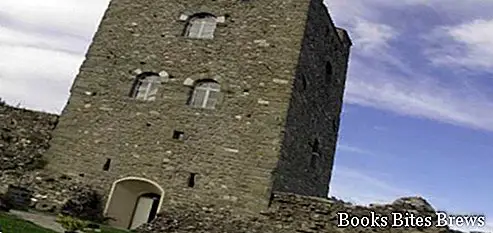What to see in Ghivizzano Castello, a small Tuscan village in the province of Lucca, a place rich in history where every year the traditional medieval pork festival takes place.
Tourist information
Ghivizzano is a medieval village that is part of the municipality of Coreglia Antelminelli.
The road route for those coming from Lucca provides a journey time of about 25 minutes by car in the direction of Garfagnana, past Borgo a Mozzano and the Devil's Bridge, there are clear driving directions.
The origins of the fortification date back to Roman times, while its urban development began in the Lombard period.
From the 11th century the Ronaldinghi, an ancient and powerful Lombard family, ruled it for a few centuries until, due to the inheritance effect, it passed to the Bizzarri family and then to the Antelminelli family.
In the fourteenth century it was the leader and Lord of Lucca, Castruccio Castracani degli Antelminelli who carried out an important consolidation work on the entire citadel.
The tower was renovated, now called "Torre di Castruccio", used as accommodation in times of war, the three floors that compose it housed the warehouses on the ground floor, the kitchen on the first floor and the sleeping room on the second floor, dates back to that period also the construction of a barracks for the soldiers, besides next to the entrance door to the village, a palace was built used as a stately home for the whole family.
To protect the village, a new wall was placed, which we can still admire today with the characteristic via Sossala, i.e. sub-hall, under the hall, a fascinating covered walkway with vaulted ceiling, whose path is illuminated by the light that filter through the windows placed on the external side of the walls.
After Castruccio's death in 1328, Francesco Castracani degli Antelminelli lived with his Ghivizzano family in the building located near the entrance door.
What see
In this imposing building his wife Giovanna died in 1336 and his son Filippo in 1347, their bodies were buried in the church of the fortress, the Church of Saints Peter and Paul, which can be reached through the central street, via Monsignor Davide Camilli, born in Ghivizzano became Bishop of Fiesole, died in 1909.
On this stone street, there is another small Romanesque-style church-oratory dating back to 1390, originally dedicated to San Matteo and from 1780 to Sant'Antonio.
Recommended readings- Artimino (Tuscany): what to see
- San Galgano (Tuscany): what to see
- Poggibonsi (Tuscany): what to see
- Castiglione di Garfagnana (Tuscany): what to see
- Tuscany: Sunday day trips
Subsequently, as the capacity of the church became insufficient to accommodate all the parishioners, the other Church of the Borgo was expanded, that of the Rocca dedicated to San Martino, dating back to 1308 and always in Romanesque style.
The first extensions, which date back to 1780, and the subsequent ones of 1885 transformed it into the current Parish Church of Saints Peter and Paul.
The bell tower was rebuilt in 1857 in the neo-Gothic style and in 1895 a third bell was added.
The construction of the staircase that serves to access the fortress and the church of Saints Paul and Peter dates back to the 19th century. It was built by demolishing a piece of the medieval walls.
In 1810 when Elisa Baciocchi, sister of Napoleon Bonaparte, ruled in Lucca, a second access door called Porta del Portello was added to the Borgo.
Every year, in the first ten days of September, the traditional Norcino festival takes place in Ghivizzano Castello, a festival of culinary specialties typical of the area with an abundance of wines for tasting.




